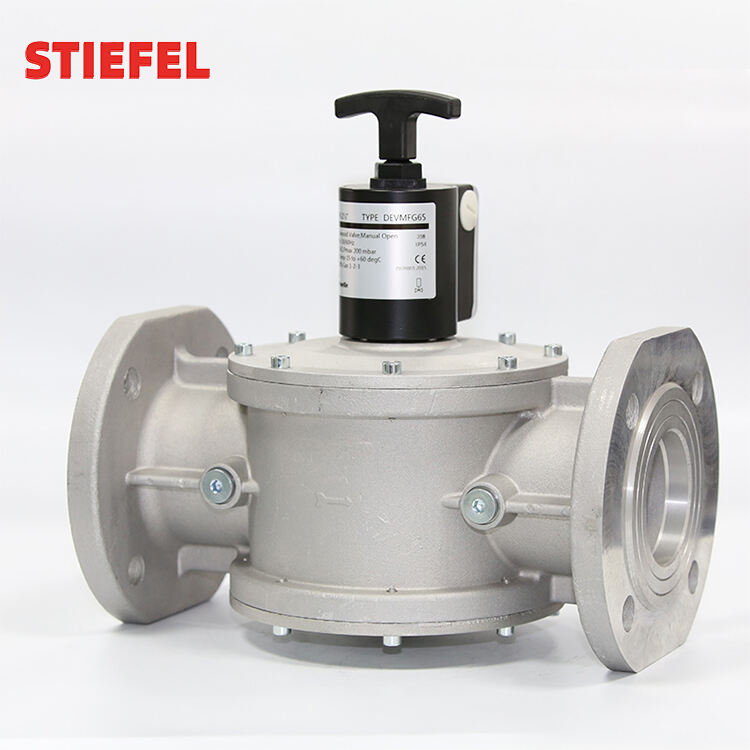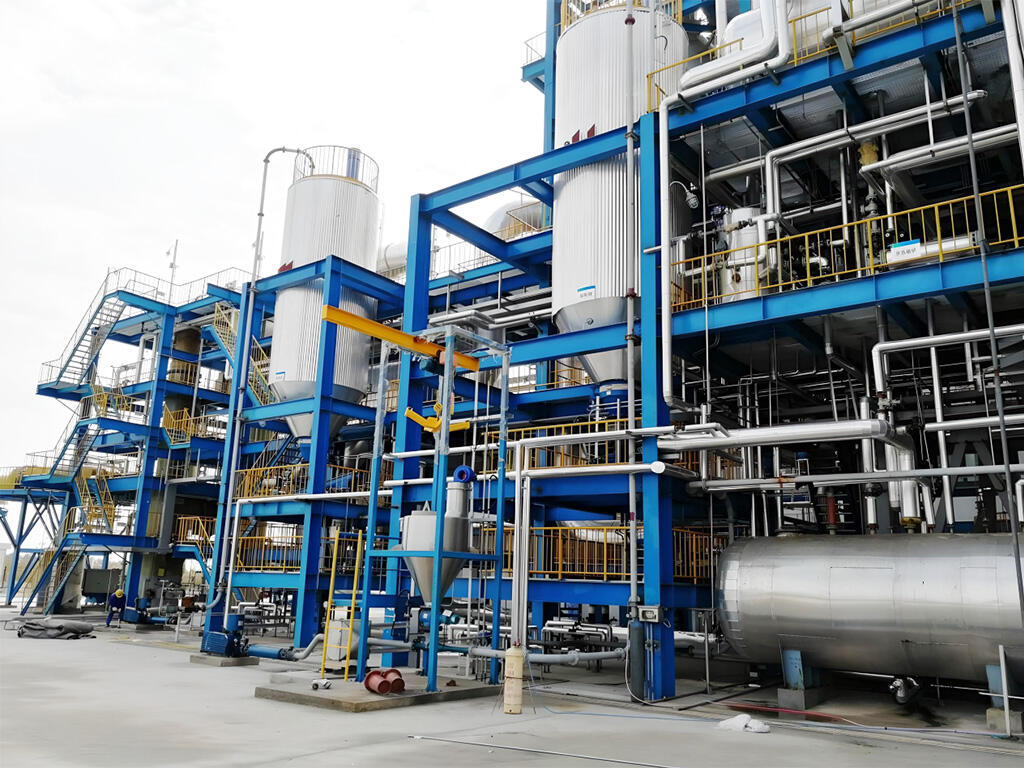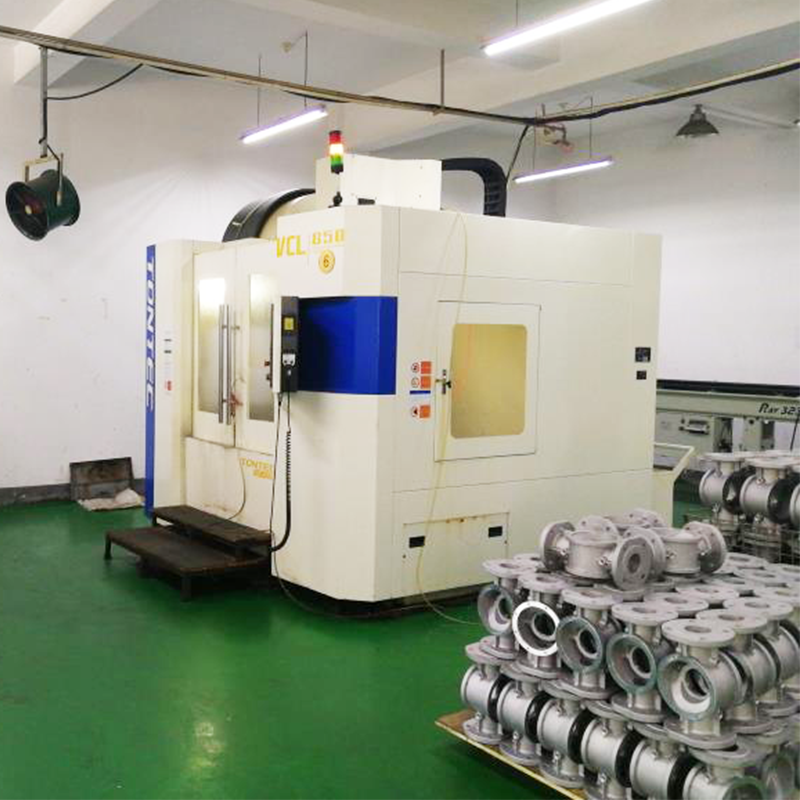วาล์วโซลินอยด์ก๊าซสนับสนุนการควบคุมของไหลในโครงสร้างพื้นฐานพลังงานหมุนเวียนอย่างไร
วาล์วโซลินอยด์แก๊สมีบทบาทสำคัญในการควบคุมการไหลของของเหลวในระบบพลังงานหมุนเวียนต่างๆ โดยสามารถจัดการการไหลทั้งของแก๊สและของเหลวในสถานที่ต่างๆ เช่น ติดตั้งพลังงานความร้อนจากแสงอาทิตย์ ระบบไฮดรอลิกของกังหันลม และการแลกเปลี่ยนความร้อนจากพลังงานความร้อนใต้พิภพซึ่งมักอยู่ใต้ดิน โมเดลใหม่ๆ สามารถควบคุมการไหลได้อย่างแม่นยำพอสมควร โดยทั่วไปจะเบี่ยงเบนไม่เกินครึ่งเปอร์เซ็นต์จากระดับที่ต้องการ แม้ในสภาพแวดล้อมที่เปลี่ยนแปลงไป ตามรายงานการศึกษาเมื่อปี 2024 จากองค์กร Renewable Energy Infrastructure ระบุว่า การออกแบบวาล์วที่ปรับปรุงใหม่นี้สามารถลดการใช้พลังงานของปั๊มลงได้ระหว่าง 12% ถึง 18% ในฟาร์มพลังงานแสงอาทิตย์ขนาดใหญ่ ประสิทธิภาพในระดับนี้ส่งผลอย่างชัดเจนในระยะยาว โดยเฉพาะอย่างยิ่งเมื่อผู้ดำเนินการต้องพยายามรักษาระดับประสิทธิภาพพร้อมกับลดต้นทุน
การบูรณาการในกระบวนการผลิตก๊าซชีวภาพ: กรณีศึกษาด้านประสิทธิภาพ
สิ่งอำนวยความสะดวกด้านไบโอแก๊สใช้โซลินอยด์วาล์วควบคุมก๊าซเพื่อจัดการความเข้มข้นของมีเทนโดยอัตโนมัติในระหว่างกระบวนการย่อยสลายแบบไร้อากาศ การวิเคราะห์อุตสาหกรรมแสดงให้เห็นว่าการตั้งค่าวาล์วอัจฉริยะสามารถเพิ่มผลผลิตของไบโอแก๊สได้ 22–30% ในขณะที่รักษาระดับออกซิเจนต่ำกว่า 0.1 ppm ความแม่นยำนี้ช่วยป้องกันความเสี่ยงจากการเผาไหม้ และทำให้สามารถประมวลผลวัตถุดิบได้อย่างต่อเนื่อง—ซึ่งเป็นสิ่งสำคัญสำหรับการผลิตพลังงานหมุนเวียนตลอด 24/7
บทบาทที่ขยายตัวในระบบเชื้อเพลิงไฮโดรเจนและระบบจัดเก็บพลังงาน
เมื่อไฮโดรเจนเริ่มกลายเป็นตัวกลางพลังงานหลัก โซลินอยด์วาล์วควบคุมก๊าซจะต้องทำงานภายใต้แรงดันเกิน 700 บาร์ในระบบจัดเก็บ โดยยังคงอัตราการรั่วซึมต่ำกว่า 0.001% เวลาตอบสนองที่รวดเร็ว (<10 มิลลิวินาที) มีความจำเป็นอย่างยิ่งในแอปพลิเคชันเซลล์เชื้อเพลิง ซึ่งการเปลี่ยนแปลงของแรงดันต้องการการปรับอัตราการไหลทันทีเพื่อป้องกันการสูญเสียประสิทธิภาพ
การเลือกข้อมูลจำเพาะของวาล์วให้สอดคล้องกับข้อกำหนดของระบบอย่างยั่งยืน
วิศวกรให้ความสำคัญกับวาล์วที่มีความเร็วในการทำงานต่ำกว่า 1 มิลลิวินาที และการป้องกันสภาพแวดล้อมระดับ IP68 สำหรับการติดตั้งกังหันลมนอกชายฝั่ง ข้อกำหนดเหล่านี้ถูกออกแบบมาเพื่อรับมือกับปัญหาการกัดกร่อนจากน้ำเค็ม และความแตกต่างของแรงดันสูงสุด (–0.9 ถึง 40 บาร์) ที่เกิดขึ้นตามธรรมชาติในโครงการพลังงานหมุนเวียนทางทะเล พร้อมรับประกันการใช้งานได้มากกว่า 100,000 รอบโดยไม่ต้องบำรุงรักษา
ความต้องการวาล์วโซลีนอยด์แก๊สที่เชื่อถือได้เพิ่มสูงขึ้นในพลังงานสีเขียว
รายงานคาดการณ์ตลาดแสดงให้เห็นว่า วาล์วโซลีนอยด์แก๊สอุตสาหกรรมจะเติบโตเฉลี่ยต่อปี 9.2% จนถึงปี 2030 โดยได้รับแรงผลักดันจากการลงทุนโครงสร้างพื้นฐานพลังงานหมุนเวียนทั่วโลกที่มีมูลค่ากว่า 1.3 ล้านล้านดอลลาร์สหรัฐ การเติบโตนี้สะท้อนบทบาทสำคัญของวาล์วในเรื่องความน่าเชื่อถือของระบบ และการปฏิบัติตามมาตรฐาน ISO 5210 สำหรับอุปกรณ์พลังงานที่ยั่งยืน
การออกแบบวาล์วโซลีนอยด์แก๊สที่ประหยัดพลังงานสำหรับการดำเนินงานที่ยั่งยืน
วาล์วโซลีนอยด์แก๊สรุ่นใหม่ได้รับการออกแบบใหม่โดยสิ้นเชิง เพื่อให้สอดคล้องกับข้อกำหนดด้านประสิทธิภาพที่เข้มงวดของระบบพลังงานหมุนเวียน ปัจจัยก้าวล้ำทางเทคโนโลยี 3 ประการนี้ ทำให้สามารถ วาล์วโซลีนอยด์แก๊ส เพื่อลดการใช้พลังงานขณะยังคงรักษาระดับความน่าเชื่อถือในการทำงาน
นวัตกรรมที่ช่วยลดการใช้พลังงานได้สูงสุดถึง 40%
ความก้าวหน้าล่าสุดด้านการออกแบบแม่เหล็กไฟฟ้า ช่วยลดความต้องการพลังงานลง 38–42% เมื่อเทียบกับรุ่นปี 2020 (รายงานเทคโนโลยีวาล์วอย่างยั่งยืน ปี 2024) นวัตกรรมหลักๆ ได้แก่
- กลไกโซลินอยด์แบบล็อค ไม่ต้องการพลังงานในการยึดถือ 0 วัตต์ หลังจากทำงานแล้ว
- ตัวควบคุมโหมดพัลส์ความกว้าง (Pulse-width modulation) ลดกระแสไฟในขดลวดลง 55% ในระหว่างการทำงานปกติ
- วงจรแม่เหล็กที่ถูกปรับให้เหมาะสม ลดการสูญเสียจากกระแสไฟฟ้าวนลง 57%
การศึกษาภาคสนามปี 2024 ที่ดำเนินการในโรงไฟฟ้าพลังความร้อนจากแสงอาทิตย์ พบว่าวาล์วเหล่านี้ช่วยลดการใช้พลังงานเสริมรายปีลง 14 เมกะวัตต์-ชั่วโมงต่อการติดตั้งหนึ่งจุด โดยยังคงรักษาระดับความน่าเชื่อถือในการทำงานที่ 99.97%
เทคโนโลยีการขับเคลื่อนที่ใช้พลังงานต่ำในวาล์วสมัยใหม่
วาล์วรุ่นใหม่ใช้ระบบจัดการพลังงานอัจฉริยะที่สามารถทำงานอัตโนมัติดังต่อไปนี้:
- ปรับแรงดันไฟฟ้าให้อยู่ในระดับความต้องการขั้นต่ำ (ความแม่นยำ ±0.5V)
- เริ่มโหมดพักขณะไม่ใช้งาน (โหมดสแตนด์บายที่ 1.8W เทียบกับวาล์วแบบดั้งเดิมที่ 8.2W)
- กู้คืนพลังงานจลน์จากการทำงานของวาล์ว (กู้คืนพลังงานได้ 12–18 mJ ต่อรอบการทำงาน)
คุณสมบัติเหล่านี้ช่วยให้สามารถใช้งานต่อเนื่องบนไมโครกริดที่ใช้พลังงานหมุนเวียน โรงงานผลิตก๊าซชีวภาพแห่งหนึ่งรายงานว่าหลังจากติดตั้งวาล์วใหม่จำนวน 214 ชุด สามารถลดการใช้พลังงานของวาล์วลงได้ถึง 83%
การสร้างสมดุลระหว่างประสิทธิภาพพลังงานและความน่าเชื่อถือในการใช้งาน
ผู้ผลิตแก้ปัญหาการแลกเปลี่ยนระหว่างประสิทธิภาพและความน่าเชื่อถือด้วยวิศวกรรมและการทดสอบที่ได้รับการพัฒนา:
| พารามิเตอร์ | วาล์วแบบดั้งเดิม | วาล์วประสิทธิภาพสูงแบบสมัยใหม่ |
|---|---|---|
| ค่าเฉลี่ยรอบการทำงานระหว่างการเกิดข้อผิดพลาด | 850,000 | 1.2 ล้านครั้ง |
| เวลาตอบสนองฉุกเฉิน | 12ms | 8.7ms |
| อัตราความสำเร็จในการสตาร์ทเครื่องแบบเย็น (-40°C) | 76% | 94% |
ประสิทธิภาพของวาล์วได้รับการตรวจสอบภายใต้พารามิเตอร์การปฏิบัติงาน 147 รายการ ซึ่งรับประกันความสอดคล้องตามมาตรฐานความปลอดภัย ISO 13849-1 และสามารถประหยัดพลังงานได้เฉลี่ย 92%
วัสดุขั้นสูงที่เพิ่มความทนทานและยั่งยืน
วาล์วโซลีนอยด์ควบคุมก๊าซแบบสมัยใหม่ใช้วัสดุขั้นสูงเพื่อให้สามารถทนต่อสภาพแวดล้อมที่ใช้งานในระบบพลังงานที่ยั่งยืนได้ ด้วยการผสมผสานความทนทานเข้ากับความรับผิดชอบต่อสิ่งแวดล้อม นวัตกรรมเหล่านี้ช่วยเพิ่มประสิทธิภาพการดำเนินงานและความยั่งยืนตลอดอายุการใช้งาน
การใช้อัลลอยที่สามารถนำกลับมาใช้ใหม่ได้และสารเคลือบที่เป็นมิตรต่อสิ่งแวดล้อม
ผู้ผลิตหันมาใช้อัลลอยอลูมิเนียม-สแคนเดียม และสารเคลือบเซรามิกส์ที่ปราศจากโครเมียมกันมากขึ้น ซึ่งช่วยลดผลกระทบต่อสิ่งแวดล้อมโดยไม่กระทบต่อสมรรถนะของวัสดุ วัสดุเหล่านี้ทำให้ วาล์วโซลีนอยด์แก๊ส เพื่อรักษาระดับการควบคุมการไหลอย่างแม่นยำมากกว่า 50,000 รอบ และยังคงสามารถรีไซเคิลได้ทั้งหมดเมื่อสิ้นสุดอายุการใช้งาน การวิเคราะห์วงจรชีวิตในปี 2023 แสดงให้เห็นว่า วาล์วที่เคลือบด้วยเทคโนโลยีเป็นมิตรต่อสิ่งแวดล้อมสร้างของเสียจากการผลิตน้อยลง 72% เมื่อเทียบกับทางเลือกแบบชุบนิกเกิลแบบดั้งเดิม
ส่วนประกอบที่ทนต่อการกัดกร่อนสำหรับสภาพแวดล้อมพลังงานหมุนเวียนที่รุนแรง
เหล็กกล้าไร้สนิมเกรด 316L และโลหะผสมแบบดูเพล็กซ์ มีบทบาทสำคัญในงานพลังงานจากทะเลและไบโอแก๊ส โดยสามารถต้านทานการกัดกร่อนจากน้ำเค็มและการกัดกร่อนจากเมธานซัลไฟด์ได้ ขณะที่พอลิเมอร์คอมโพสิตที่ผสมออกไซด์ของกราฟีนให้การป้องกันเพิ่มเติมในระบบจัดเก็บไฮโดรเจน ซึ่งตามเกณฑ์มาตรฐานวิศวกรรมการกัดกร่อนระบุว่า ช่วยลดช่วงเวลาการบำรุงรักษาลงได้ถึง 40% ในติดตั้งกังหันลมนอกชายฝั่ง
ยืดอายุการใช้งานเพื่อลดของเสียและค่าใช้จ่ายในการบำรุงรักษา
ความก้าวหน้าด้านวิทยาศาสตร์ของวัสดุ ทำให้สามารถพัฒนาวาล์วรุ่นใหม่ให้มีอายุการใช้งานยาวนานขึ้น 30–50% เมื่อเทียบกับมาตรฐานอุตสาหกรรมในปี 2020 ความทนทานนี้ช่วยลดความถี่ในการเปลี่ยนชิ้นส่วน—ซึ่งมีความสำคัญอย่างมากในโรงไฟฟ้าพลังงานความร้อนจากแสงอาทิตย์และสถานที่ติดตั้งแบตเตอรี่ขนาดใหญ่ระดับกริดไฟฟ้า ที่ซึ่งการเข้าถึงเพื่อทำการบำรุงรักษามีค่าใช้จ่ายสูงและมีความซับซ้อนทางด้านลอจิสติกส์
วาล์วโซลีนอยด์ควบคุมการทำงานด้วยระบบอัจฉริยะและการเชื่อมต่อที่ขับเคลื่อนระบบพลังงานอัจฉริยะ
การผสานรวมระบบ IoT และการตรวจสอบแบบเรียลไทม์ในระบบควบคุมการไหลของของเหลว
วาล์วโซลีนอยด์ควบคุมก๊าซในปัจจุบันมักมาพร้อมกับเซ็นเซอร์ IoT ในตัวที่สามารถตรวจสอบข้อมูลต่าง ๆ เช่น อัตราการไหล ความแตกต่างของแรงดัน และสถานะการเปิด-ปิดของวาล์ว การเชื่อมต่ออุปกรณ์เหล่านี้ได้ช่วยให้ผู้ดำเนินการโรงงานสามารถควบคุมการเคลื่อนที่ของพลังงานในระบบพลังงานความร้อนจากแสงอาทิตย์และเครื่องปฏิกรณ์ผลิตก๊าซชีวภาพได้ดียิ่งขึ้น นอกจากนี้ยังช่วยลดระดับของเสียลงได้อย่างมาก อาจลดลงได้ประมาณ 18% เมื่อเทียบกับระบบที่ใช้แบบแมนนวลในอดีต ลองดูข้อมูลล่าสุดจากรายงาน Smart Valve Innovations Report ที่เผยแพร่ในปี 2024 ซึ่งมีข้อมูลที่น่าประทับใจอย่างหนึ่งคือ เมื่อโรงผลิตพลังงานความร้อนใต้พิภพใช้เทคโนโลยีวาล์วอัจฉริยะนี้ พวกเขามีความสามารถตอบสนองต่อการเปลี่ยนแปลงของแรงดันที่เกิดขึ้นกะทันหันได้เกือบจะในทันที ลดเวลาการตอบสนองลงได้ประมาณ 90% การตอบสนองที่รวดเร็วเช่นนี้ช่วยให้การผลิตพลังงานมีเสถียรภาพแม้ในสภาพแวดล้อมที่เปลี่ยนแปลงไปอย่างไม่คาดคิด
การปรับปรุงประสิทธิภาพของวาล์วโซลีนอยด์ควบคุมก๊าซโดยใช้ AI
อัลกอริทึมการเรียนรู้ของเครื่องวิเคราะห์ข้อมูลวาล์วในอดีตเพื่อทำนายรูปแบบการใช้งานที่เหมาะสม ลดการใช้พลังงานไฟฟ้าระหว่างรอบการอัดไฮโดรเจน ระบบเหล่านี้ปรับเปลี่ยนรอบการทำงานโดยอัตโนมัติตามการพยากรณ์ความต้องการ ทำให้เกิดประสิทธิภาพสูงขึ้น 22% ในแอปพลิเคชันการเก็บพลังงานระดับกริด
การบำรุงรักษาเชิงพยากรณ์ในระบบทำความเย็นของกังหันลม: การประยุกต์ใช้งานเชิงปฏิบัติ
วาล์วโซลีนอยด์ควบคุมแก๊สอัจฉริยะในฟาร์มกังหันลมนอกชายฝั่งใช้เซ็นเซอร์การสั่นสะเทือนและอุณหภูมิในการตรวจจับสัญญาณเริ่มต้นของการเสื่อมสภาพของซีล การศึกษาในปี 2023 โดยระบบพลังงานหมุนเวียนแสดงให้เห็นว่าวิธีการนี้ช่วยลดเวลาหยุดทำงานของกังหันได้ 41% ที่สถาน facility แห่งหนึ่งในทะเลเหนือ โดยการเปิดใช้งานการบำรุงรักษาตามสภาพเครื่องจักร แทนการกำหนดตารางบริการที่ตายตัว
กลยุทธ์การนำวาล์วอัจฉริยะมาใช้แบบเป็นขั้นตอนในระบบการเก็บพลังงานระดับกริด
หน่วยงานด้านพลังงานกำลังนำวาล์วอัจฉริยะมาใช้ในสามขั้นตอน:
- ติดตั้งเซ็นเซอร์วัดความดันแบบไร้สายในระบบเก็บอากาศอัดในปัจจุบันใหม่
- เชื่อมโยงวาล์วอาร์เรย์เข้ากับเครือข่าย SCADA เพื่อปรับสมดุลภาระในระดับภูมิภาค
- ใช้งานอัลกอริทึมควบคุมอัตโนมัติที่ประสานงานกับจุดสูงสุดของการผลิตพลังงานจากแหล่งพลังงานหมุนเวียน
วิวัฒนาการจากระบบวาล์วเชิงกลไปสู่ระบบวาล์วอัจฉริยะ
การเปลี่ยนผ่านจากปุ่มปรับแบบแมนนวลไปสู่วาล์วที่สามารถปรับเทียบเองได้และเชื่อมโยงกับเครือข่าย แสดงให้เห็นถึงการปรับปรุงความละเอียดในการควบคุมถึง 300% สำหรับโรงไฟฟ้าที่เก็บพลังงานด้วยอากาศเหลว การเปลี่ยนแปลงนี้ทำให้วาล์วโซลีนอยด์ก๊าซสามารถทำหน้าที่เป็นผู้มีส่วนร่วมเชิงรุกในระบบนิเวศสมาร์ทกริด แทนที่จะเป็นเพียงองค์ประกอบแบบพาสซีฟ
วาล์วโซลีนอยด์ก๊าซในการลดการปล่อยมลพิษและการจัดการคุณภาพอากาศ
การให้สารอย่างแม่นยำเพื่อควบคุมการปล่อยมลพิษอย่างมีประสิทธิภาพ
วาล์วโซลีนอยด์แก๊สให้ความแม่นยำที่ค่อนข้างน่าประทับใจสำหรับการควบคุมการปล่อยมลพิษในอุตสาหกรรม รวมถึงการจัดการการไหลของมีเทน คาร์บอนไดออกไซด์ และไนตรัสออกไซด์ในระหว่างกระบวนการเผาไหม้ โมเดลล่าสุดสามารถปิดระบบได้อย่างมีประสิทธิภาพถึงประมาณร้อยละ 99.8 ตามผลการทดสอบตามมาตรฐาน ISO 15848 ซึ่งถือว่ามีความสำคัญมากสำหรับบริษัทที่ต้องการปฏิบัติตามข้อกำหนดตามแนวทางของ EU's Industrial Emissions Directive ในส่วนของระบบกู้คืนแก๊สเผาทิ้ง (Flare Gas Recovery Systems) ช่วงนี้มีพัฒนาการที่น่าสนใจ ซึ่งสามารถลดการปล่อยมลพิษได้ประมาณร้อยละ 35 เนื่องจากมีระบบควบคุมการไหลที่ดีกว่า ทำงานร่วมกับเซ็นเซอร์ที่คอยให้ข้อมูลแบบเรียลไทม์อย่างต่อเนื่อง
บทบาทสำคัญในโครงสร้างพื้นฐานการจับและกักเก็บคาร์บอน (CCS)
เมื่อโครงการดักจับและกักเก็บคาร์บอน (CCS) ขยายตัวจนถึงระดับกิกะตัน วาล์วโซลีนอยด์ก๊าซจะมีความสำคัญอย่างยิ่งในการป้องกันการรั่วของ CO2 ที่จุดต่างๆ ประมาณ 15 จุดตลอดกระบวนการดักจับและกักเก็บทั้งหมด รุ่นที่ออกแบบสำหรับอุณหภูมิต่ำสามารถรักษาการปิดผนึกได้อย่างมีประสิทธิภาพแม้ในสภาพอุณหภูมิที่ลดลงถึงลบ 56 องศาเซลเซียส ซึ่งเป็นอุณหภูมิในท่อขนส่ง CO2 ในสถานะของเหลว อีกทั้งยังมีรุ่นพิเศษที่ออกแบบให้รับแรงดันสมดุล ซึ่งสามารถทนต่อแรงดันฉีดจ่ายที่สูงเกินกว่า 300 บาร์ ณ จุดกักเก็บใต้ดิน นอกจากนี้ จากการศึกษาในอุตสาหกรรมต่างๆ พบว่า การเปลี่ยนจากระบบไนตริกแบบเดิมมาใช้วาล์วรุ่นใหม่นี้ สามารถลดการปล่อยก๊าซที่ไม่พึงประสงค์ได้มากถึงประมาณ 92% ซึ่งการปรับปรุงในระดับนี้สร้างความแตกต่างให้กับผู้ดำเนินการโครงการ CCS ในระดับใหญ่ได้อย่างชัดเจน
สนับสนุนอากาศที่สะอาดยิ่งขึ้นด้วยการควบคุมการไหลของก๊าซที่เชื่อถือได้
ปัจจุบันมีโครงการคุณภาพอากาศในเมืองจำนวนมากขึ้นเรื่อยๆ ที่นำวาล์วโซลินอยด์ก๊าซอัจฉริยะเหล่านี้มาติดตั้งในระบบกู้คืน VOC และเครื่องฟอกไอเสีย จากการวิจัยเมื่อปีที่แล้ว เมื่อเมืองต่างๆ เริ่มนำวาล์วที่เชื่อมต่อกับ IoT เหล่านี้มาใช้ พวกเขาพบว่าการตอบสนองต่อปริมาณฝุ่นละอองที่เพิ่มขึ้นอย่างฉับพลันดีขึ้นประมาณ 18 เปอร์เซ็นต์ ระบบจะส่งกระแสอากาศสกปรกเหล่านั้นผ่านตัวกรองเสริมโดยอัตโนมัติตามความจำเป็น สำหรับการดำเนินงานทำความสะอาดอากาศที่สำคัญจริงๆ วิศวกรมักใช้ระบบสำรองแบบคู่ เพื่อไม่ให้ระบบใดถูกปิดการทำงานโดยตั้งใจ ระบบสำรองเหล่านี้มักจะมีอายุการใช้งานยาวนานกว่า 250,000 รอบการทำงานก่อนที่จะต้องบำรุงรักษา ซึ่งถือว่าน่าประทับใจมากสำหรับโครงสร้างพื้นฐานที่สำคัญเช่นนี้
คำถามที่พบบ่อย
วาล์วแม่เหล็กไฟฟ้าควบคุมก๊าซมีบทบาทอย่างไรในระบบพลังงานหมุนเวียน?
วาล์วแม่เหล็กไฟฟ้าควบคุมก๊าซทำหน้าที่ควบคุมการไหลของของเหลวในระบบพลังงานหมุนเวียน เช่น ระบบพลังงานแสงอาทิตย์ พลังงานลม และพลังงานความร้อนใต้พิภพ เพื่อให้มั่นใจถึงประสิทธิภาพและการประหยัดต้นทุน
วาล์วโซลินอยด์แก๊สช่วยในการผลิตก๊าซชีวภาพอย่างไร
พวกมันควบคุมความเข้มข้นของมีเทนระหว่างกระบวนการย่อยสลายแบบไม่ต้องการออกซิเจน ทำให้เพิ่มผลผลิตได้ 22–30% ขณะที่ลดความเสี่ยงจากการเผาไหม้ลง
มีความก้าวหน้าอะไรบ้างในด้านการออกแบบวาล์วโซลินอยด์แก๊สเพื่อประสิทธิภาพพลังงาน
นวัตกรรมต่างๆ เช่น กลไกตรึงและวงจรที่ถูกปรับแต่ง ช่วยลดการใช้พลังงานลงได้สูงสุดถึง 42% ในรุ่นใหม่ๆ
วาล์วโซลินอยด์แก๊สช่วยในการลดการปล่อยมลพิษและการจัดการคุณภาพอากาศอย่างไร
วาล์วเหล่านี้ควบคุมการปล่อยมลพิษระหว่างกระบวนการเผาไหม้อย่างแม่นยำ ช่วยให้เป็นไปตามมาตรฐาน และลดผลกระทบต่อสิ่งแวดล้อม
สารบัญ
- วาล์วโซลินอยด์ก๊าซสนับสนุนการควบคุมของไหลในโครงสร้างพื้นฐานพลังงานหมุนเวียนอย่างไร
- การบูรณาการในกระบวนการผลิตก๊าซชีวภาพ: กรณีศึกษาด้านประสิทธิภาพ
- บทบาทที่ขยายตัวในระบบเชื้อเพลิงไฮโดรเจนและระบบจัดเก็บพลังงาน
- การเลือกข้อมูลจำเพาะของวาล์วให้สอดคล้องกับข้อกำหนดของระบบอย่างยั่งยืน
- ความต้องการวาล์วโซลีนอยด์แก๊สที่เชื่อถือได้เพิ่มสูงขึ้นในพลังงานสีเขียว
- การออกแบบวาล์วโซลีนอยด์แก๊สที่ประหยัดพลังงานสำหรับการดำเนินงานที่ยั่งยืน
- วัสดุขั้นสูงที่เพิ่มความทนทานและยั่งยืน
-
วาล์วโซลีนอยด์ควบคุมการทำงานด้วยระบบอัจฉริยะและการเชื่อมต่อที่ขับเคลื่อนระบบพลังงานอัจฉริยะ
- การผสานรวมระบบ IoT และการตรวจสอบแบบเรียลไทม์ในระบบควบคุมการไหลของของเหลว
- การปรับปรุงประสิทธิภาพของวาล์วโซลีนอยด์ควบคุมก๊าซโดยใช้ AI
- การบำรุงรักษาเชิงพยากรณ์ในระบบทำความเย็นของกังหันลม: การประยุกต์ใช้งานเชิงปฏิบัติ
- กลยุทธ์การนำวาล์วอัจฉริยะมาใช้แบบเป็นขั้นตอนในระบบการเก็บพลังงานระดับกริด
- วิวัฒนาการจากระบบวาล์วเชิงกลไปสู่ระบบวาล์วอัจฉริยะ
- วาล์วโซลีนอยด์ก๊าซในการลดการปล่อยมลพิษและการจัดการคุณภาพอากาศ
- คำถามที่พบบ่อย



